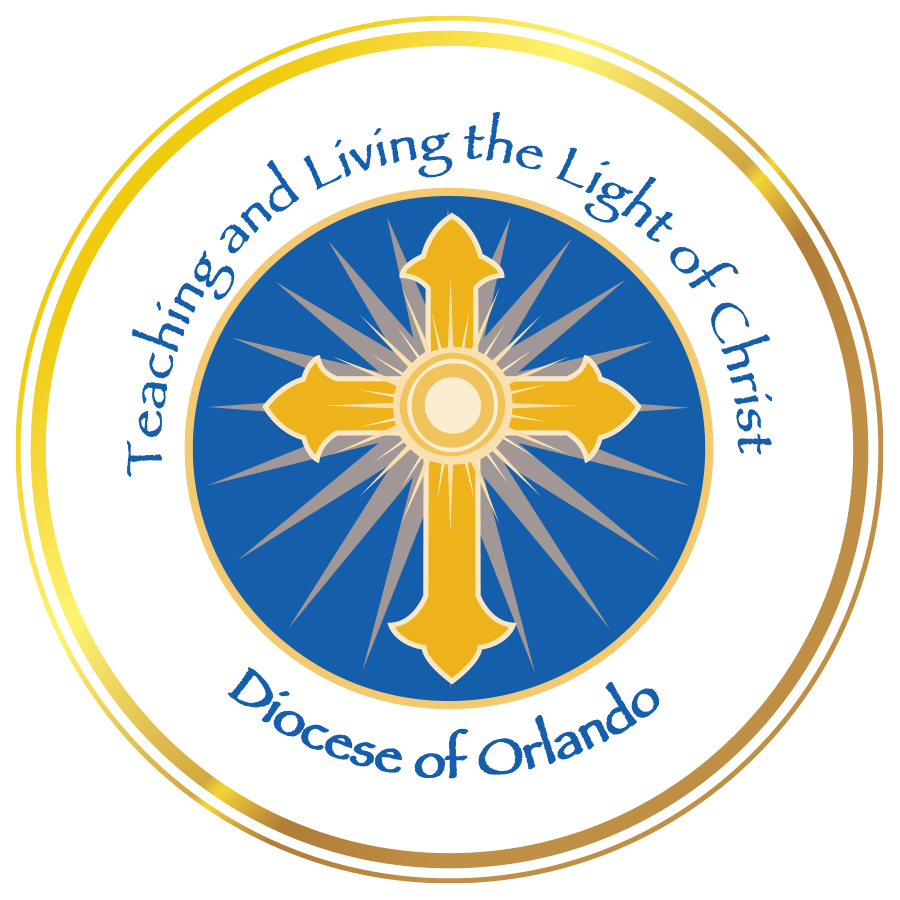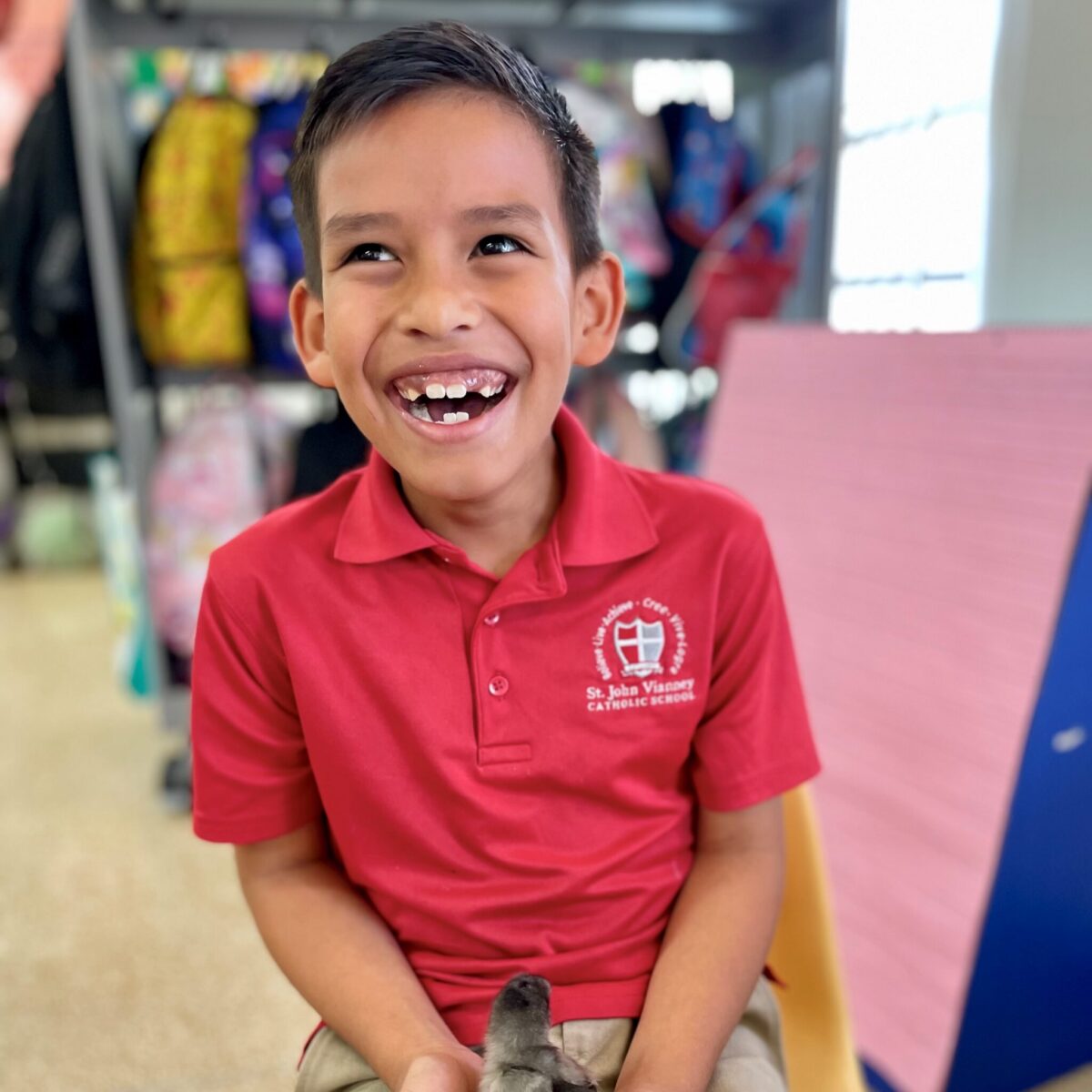ORLANDO | Is it chirp, chirp or pio, pio?
Yes, chickens chirp differently in Spanish, as second graders discovered through a cross-curricular project at dual language school, St. John Vianney in Orlando.
The students are learning to care for creation through the science of hatching and raising chicks, and exploring themes of human dignity, through religion while incorporating Spanish into the lessons. Gathering diapers at a “baby shower” for the chicks and donating them to JMJ Pregnancy Center helps students make the connection between caring for creation and the human dignity of a person.

Teachers Maureen Geelan and Maria Brant worked together on the chicken project for cross-curricular lessons in English and Spanish. Using a method called “candling,” students held the eggs over a light to see if there was growth inside. The exercise taught them to respect life, even the unborn, by seeing something so small grow into a chick.
“As we care for the chicks, we help mothers care for their babies by donating diapers,” Geelan said. “It has been a very fulfilling activity for all of us.”
Geelan, who teaches Science, Religion and English, said the lesson was in sync with the Franciscan school’s spirit as St. Francis of Assisi loved animals and nature, emphasizing a need to care for them. Brant worked closely with Geelan to make the lessons bilingual and fun. Being a dual language school, English and Spanish are integrated into lessons when possible.
Baby shower activities like Pin the Pacifier on the Baby and Baby Shower Lotería (BINGO), making chick crafts, singing Spanish lullabies and bringing supplies for moms in need helped link the lessons together in a creative way.
Prior to the COVID pandemic, the chicken project STREAM lesson was a staple for second graders. Both teachers joked about being proud moms once again and laughed about a baby shower, but then began to consider the idea in earnest. Collecting diapers at the shower added the religious element of caring for the vulnerable.
“The challenge is how to find things that are dual-language and connect content across two languages,” Geelan noted.

(COURTESY)
Because the chicks needed to be cared for daily, Brant and Geelan checked on them, even on weekends. The first chicken hatched on a Sunday. Geelan and Brant sent out a birth certificate because everyone wanted to know about their progress. They named the chick Dominga – a female version of the word Sunday in Spanish.
On Monday, students and teachers discovered “a hatching extravaganza”, Geelan recalled. She explained that the peeping encourages the other chicks to hatch. One of them hatched during class so students were able to see it in real time. They applauded and sang “Happy Birthday.” Steeped in the school’s Franciscan spirit, Geelan said the opportunity to talk about Care for Creation and Social Justice helped weave in the science of it all. It also enabled discussion about “being a good steward of creation”. The donations culminated in the final teaching: as they cared for the baby chicks, they also helped mothers who are caring for their babies.
“They also got the foundation that life grows from something very small in an egg, into a chicken,” noted Geelan. “It’s a gentle way of introducing them into the dignity of life. That we don’t just have to care for animals, but people too.”
By Glenda Meekins of the Florida Catholic staff, February 27, 2023

